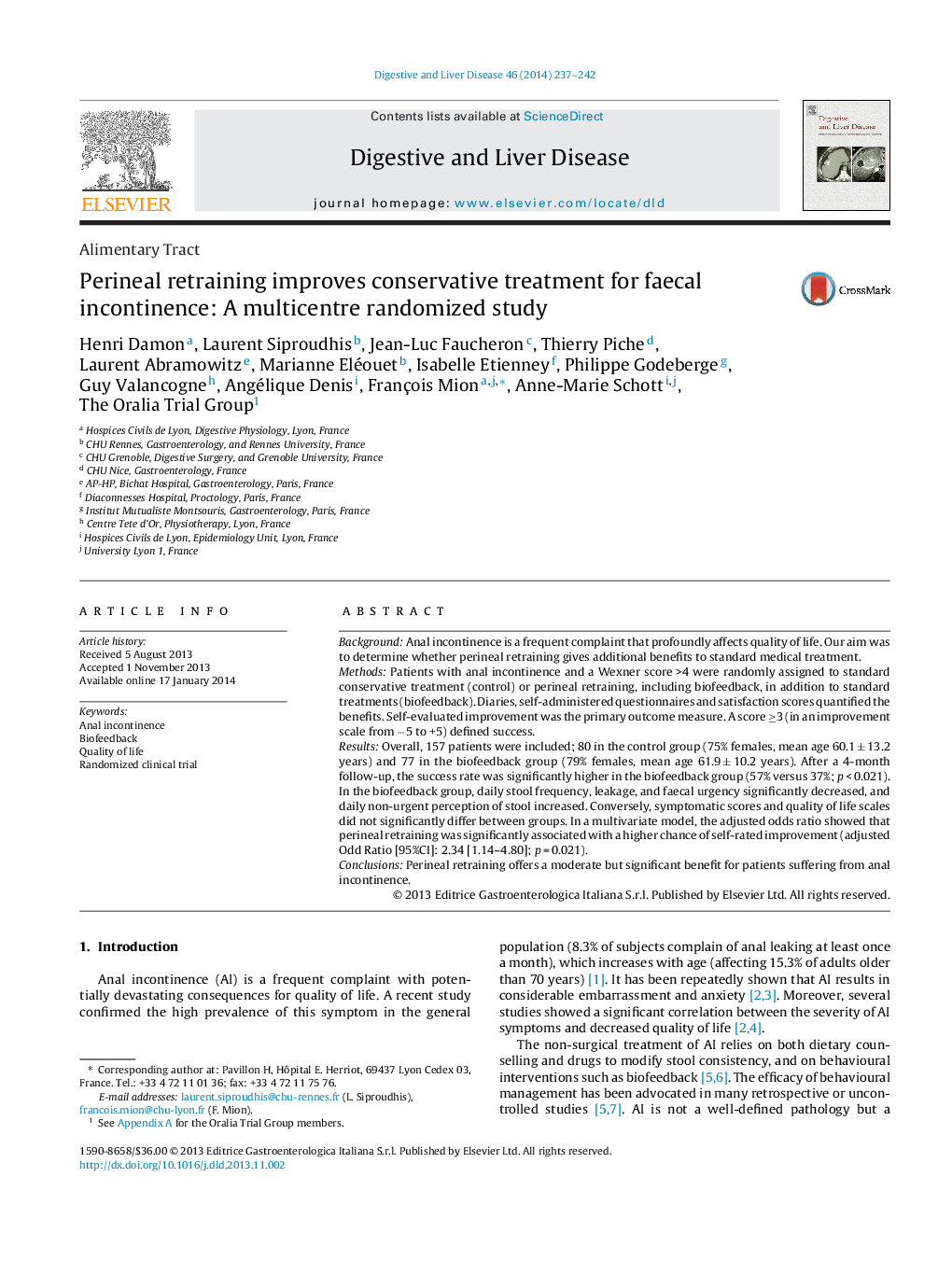| Article ID | Journal | Published Year | Pages | File Type |
|---|---|---|---|---|
| 3262208 | Digestive and Liver Disease | 2014 | 6 Pages |
BackgroundAnal incontinence is a frequent complaint that profoundly affects quality of life. Our aim was to determine whether perineal retraining gives additional benefits to standard medical treatment.MethodsPatients with anal incontinence and a Wexner score >4 were randomly assigned to standard conservative treatment (control) or perineal retraining, including biofeedback, in addition to standard treatments (biofeedback). Diaries, self-administered questionnaires and satisfaction scores quantified the benefits. Self-evaluated improvement was the primary outcome measure. A score ≥3 (in an improvement scale from −5 to +5) defined success.ResultsOverall, 157 patients were included; 80 in the control group (75% females, mean age 60.1 ± 13.2 years) and 77 in the biofeedback group (79% females, mean age 61.9 ± 10.2 years). After a 4-month follow-up, the success rate was significantly higher in the biofeedback group (57% versus 37%; p < 0.021). In the biofeedback group, daily stool frequency, leakage, and faecal urgency significantly decreased, and daily non-urgent perception of stool increased. Conversely, symptomatic scores and quality of life scales did not significantly differ between groups. In a multivariate model, the adjusted odds ratio showed that perineal retraining was significantly associated with a higher chance of self-rated improvement (adjusted Odd Ratio [95%CI]: 2.34 [1.14–4.80]; p = 0.021).ConclusionsPerineal retraining offers a moderate but significant benefit for patients suffering from anal incontinence.
